|
Buffalo, it seems, is very near to Niagara Falls. Some of my friends and I decided to take a bit of a sightseeing excursion on Saturday afternoon and made it to the Falls, both US and Canadian views. And then from the Canadian side:
0 Comments
The whole purpose of this trip was to attend this conference. I contributed a poster, which told the story of my recent Heritage Weaving Project in the Atrium of the St Boniface General Hospital:
Braiding and Weaving relaxing, creative, meditative Introduction “Spinning and Weaving are the highest forms of Meditation” Mahatma Ghandhi The project described here, one of several undertaken at the St Boniface General Hospital Atrium in Winnipeg, Manitoba, produced 8 Fingerwoven Samples for The Manitoba Museum. The type of weaving selected seemed appropriate to the setting: -Fingerweaving is low-tech, no noise, easily mobile, quick to set-up and take-down daily. -The project was very time consuming, but also easily interrupted, the weaver is able to interact with the public. -The method used is culturally very significant to the demographic served by the hospital. -Perceived as a disappearing art, it generated much interest. Slow but measurable progress over a period of 10 months, allowed for a rapport between weaver and atrium visitor: -Hospital staff regularly visit the atrium on break time. -Visitors enter and exit the hospital through the atrium. -The atrium is accessible to hospital patients. The variety of patterns in the samples were based on articles in museums across North America. Sash samples will be used by the Manitoba Museum for future education & display purposes. Previous weaving projects received much anecdotal support, I decided to institute a method for generating concrete measurement of success. Purposes Humans reach to their heritage in times of crisis in search of healing. Repetitive creative activities draw the individual into a mental state in which they access their personal resources. Weaving is a metaphor for teamwork: Alone we are fragile, together we are strong. Methods In-house advertising was done through the hospital newsletter. Poster announcing my presence was on display in the Atrium. Weaving took place in the Atrium, 3 days per week, 11AM to 4PM, November 2007, to July, 2008. Materials were made available for visitors to try fingerweaving. These numbers are countable. Knitting, crochet, and quilting assistance also offered. Brochure outlining the program was available to visitors. Brochures taken is countable. Guest book was offered to visitors for signing. Book signatures are countable. Designs were chosen in consultation with Manitoba Museum curator. Samples were woven according to the fingerweaving method. Outcomes Weaving in the Atrium of the St. Boniface General Hospital contributed to a healing environment. On the basis of comments left in the guest book, individuals expressed the impression that: -The sight of the sash speaks a welcome to local ethnic groups. Number of brochures taken and read: 972 -Weaving provided a diversion and relaxation for staff, patients, and visitors. Estimated average 50 per day, watching. -Craft was promoted as a means to personal re-sourcing; Individuals reported that looking was nice, but doing it themselves was even better. Number of individuals completing a small sample: 172 The Manitoba Museum received 8 fingerwoven pieces for education & display purposes. Conclusion Weaving is an effective remedy for the stress experienced in health care settings. Acknowledgements Manitoba Artists in Healthcare Manitoba Culture Heritage and Tourism Musée de St. Boniface Museum St. Boniface General Hospital The Manitoba Museum Tuesday, April 21 I was privileged to examine sashes in the collection of the Royal Ontario Museum. In all I looked at nine fingerwoven sashes and two sprang sashes. Amazing pieces all. How to put into words all the things I saw is a challenge right now. I will make this information available to you eventually. Among the details viewed are the recovery from the situation where the center of the arrow wanders off to one side, recovering from weaving too far, short rows near the central arrow, and interesting plaiting technique linking the fringes and preventing them from tangling, evidence of splicing in new threads, and another detail that created an interesting ridge at the change-of-weft. All this is inspiring me to write up a set of ‘problems and solutions’, expanding on the ‘trouble shooting’ section in my book.
Eagerly awaiting the photos taken by the curators. The word to fingerweavers of the world is not to sweat when mistakes happen. There is clear evidence that this even happens to the experts. Many thanks to Karla, Christine, and Anu for their patience and support. So, April 20, here I am in Toronto. I was scheduled to examine sashes at the Canadian Textile Museum at 11. This gave me time after breakfast to check out Romni Wools … yes, there is a reason that Ontario weavers and fiber artists rave about this store. What an amazing collection of yarn!
Yes, I did move on the the Textile Museum. Roxanne had three splendid fingerwoven sashes out for my examination. All three were in the classic arrow-and-lightning pattern. One particularly captivated my interest. The weaver must have had a rough time. It looks to me like there may be evidence of a number of problems my students face … and some clever solutions. -losing the shed -weaving too far -checkerboardingOK, in the category of losing the shed. I recommend the use of a ‘safety belt’ to tie off one group of threads whenever you pause in your work to keep the upper and lower threads separate. The error I saw on this sash entailed two different spots where a whole row (or significant portion thereof) exhibited an awful disorganization in the threads. I am thinking that this weaver lost the shed, and instead of meticulously re-establishing the shed, this clever weaver just buffaloed on, and you don’t much notice until you look closely. Second problem, weaving too far. In the arrow-and-lightning pattern, weft-to-warp changes are supposed to happen at regular intervals. It looks to me like the weaver of this sash occasionally went too far with a weft. When this happens to me, I work backwards, unweaving as I go across the row to the spot where the change is supposed to happen. The clever weaver here did not work backwards, but rather just pulled the weft between the shed back to the right place, and dragged the proper color on over. With the next row, yes there were three threads in the shed … maybe this needs a diagram. It’s a clever solution to a common problem. The third anomaly in the sash was the presence of short rows. In knitting, particularly at the neck of a sweater, a person sometimes works only part way across, not using all the stitches before turning. This causes the work to grow a bit more in a selected spot. In this sash, I saw evidence of short rows at the outside color zones for the first half of the sash, and near the central arrow in the second half of the sash. Now, I’m not sure about these short rows at the outside edges. I have seen it before, and my theory is that the weaver felt that the thread in the outer color zones was perhaps a bit thinner than that in the central arrowhead and center color zones. This might be the way to make up for this difference in thread size. As I say, I have seen this in other sashes. Where it is present it is not always consistently done throughout the full sash. The sashes seem to lay quite flat, equally in the areas with the short rows and in the areas without. Anyhow, the feature of this sash that I think might be of interest to weavers was the use of short rows in the second half of the sash … in the lightnings immediately to the side of the arrowhead. I am thinking that this technique could help those weavers who are chronically plagued by checkerboarding. Extra rows, extending from the center and weaving through only the first two or three lightnings increases the length, relieves the puckering and eliminates the checkerboarding caused by too much tension on the center threads…this is my theory to explain the odd presence of this feature of the sash. After lunch I headed out to Peterborough by Greyhound. I had a lovely chat with Beth, Ipie and Jeremy, about sash weaving and sash wearing, and speculation concerning the origin of this special design. Then the real treat, a quick tour of the Canadian Canoe Museum. Any of you who read this and who are in the area, go visit the Canadian Canoe Museum and the Canadian Textile Museum. Both definitely worth the trip! The Society for the Arts in Healthcare is holding its annual conference in Buffalo, NY, April 22-25, and I’m going.
While in the Great Lakes area, I’ll be visiting sites and museums connected with sashes. On the list are Monday April 20, Canadian Textile Museum and the Canadian Canoe Museum. Tuesday April 21, the Royal Ontario Museum. Wednesday to Saturday, April 22-25, the SAH Conference in Buffalo Sunday, April 26 I travel to Rochester Monday and Tuesday I’ll be at the Rochester Museum and Science Center. Monday evening I’m meeting with members of the Weavers’ Guild of Rochester. Tuesday evening I travel to Niagara Falls where, on Wednesday the 29th I’ll check out sashes at the Lundy’s Lane Museum. Then it’s back to Winnipeg. If you’re on my route, send me an e-mail and maybe we can meet. The last week of March was Spring Break for local teenagers. I took the opportunity to drive to visit family and sights in Nebraska. Two hours out of Winnipeg we encountered the floodwaters of the Red River in North Dakota. Arriving in Omaha we checked out the new pedestrian bridge, it sure looks like our bridge in Winnipeg, minus the restaurant in the middle. We then drove Interstate 80 going West, in search of Sand Hills cranes. We were not dissapointed. Continuing on West, at the recommendation of my brother, we took in ‘Carhenge’ Our next destination was Mt Rushmore. Sadly the weather fogged over. More exactly a blizzard hit. We could hardly see the road. My teenagers got the driving challenge they had asked for. Mount Rushmore was invisible. Back in North Dakota, the weather cleared. The boys were satisfied with their Spring Break escape. Pretty amazing what you see when your teenager takes over the camera on a vacation. All in all it was a pretty amazing trip
How to describe what I’ve been doing. I’m working on a woven dress. I started out with a set of threads laid across the shoulder of a dressform, and wove them several rows. I then removed the sticks, and wove towards the back of the dress form. Now I started on the other shoulder, doing exactly the same thing on the right side of the dress form. A while later you can see the upper back of the dress, about the lower level of the sleeve hole
Work is progressing on that replica of Elzéar Goulet’s sash. After matching up the colors in January, respinning the yarn all February, I started weaving in March. Elzéar’s sash was very loosely woven, only 6 wefts per inch in a very fine wool. My theory was that this could be produced using the false weave, creating two sashes at once. I calculated 13 feet to produce the 10 foot sash. Twice this, 26 feet of warp, was tied between two pillars in the Atrium of the St Boniface General Hospital where I work. The original sash has some fill-in at the top of the sash, to mitigate the pointiness at the upper border (I sometimes call this the fish-tail effect). Note the ‘short rows’ that make the first green lightnings start much lower than the first blue lightning. So I did this bit of weaving before taking the warp to the Atrium, tieing off each row carefully. Installed in the Atrium, I attempted to shove each false row twenty feet down the warp. I have to confess failure. A certain amount of mixing up of threads happened in transit from my warping mill to the Atrium site, what with the slight elasticity of the threads and small differences in lengths between individual threads, and perhaps insufficient tension on the whole, it took me over an hour to clear the first shed. I worked on it all afternoon, figuring that once I got it all lined up it would start working more smoothly. I then realized that as I cleared the shed, the threads were jangling around behind me. I am thinking that a team of several people working on this, one shoving the shed, and two others, stationed on either side of the first person, assisting, could do the job. But this would seem to defeat the purpose. This would be much less efficient than weaving two sashes. In the end, I cut the 26 ft warp in half, and now am weaving two sashes, one tight and the other loose. Now, I’m not yet ready to totally abandon the theory of the false-weave sash. I’m rethinking this. I figure I’d need several things:
-measure out the warp IN THE SAME SITE as I will weave, no releasing the tension, folding it up and transporting -much more tension on the warp -lots of warp sizing -extra personnel to keep the threads from jumping around -shorter lengths for experimentation (indeed I have been successful shoving the false weave 4 feet, why not 20???). My next experiment will attempt to shove the false weave 10 feet. |
Categories
All
Archives
May 2023
Categories
All
|


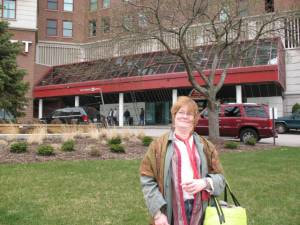
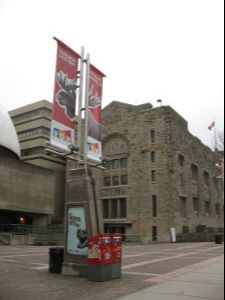
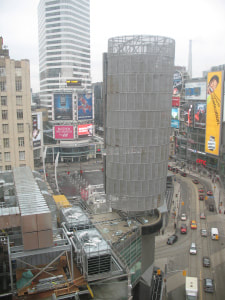

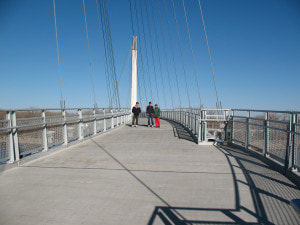
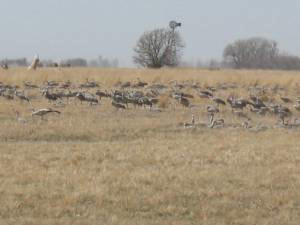
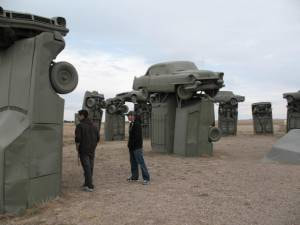

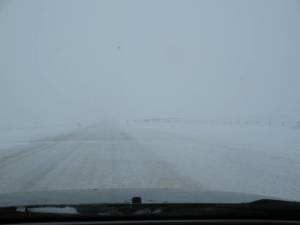

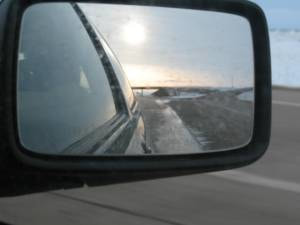







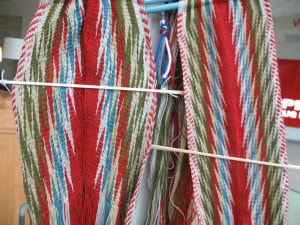
 RSS Feed
RSS Feed